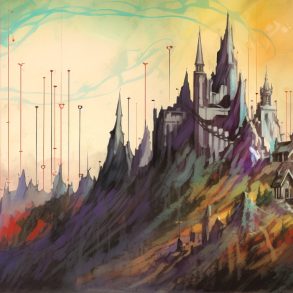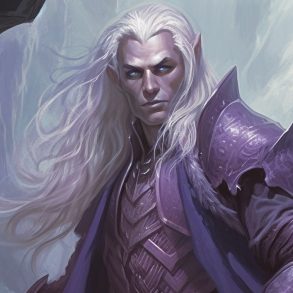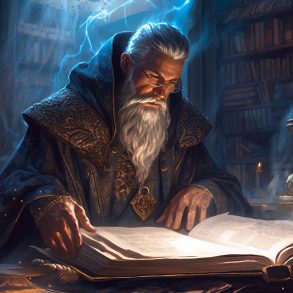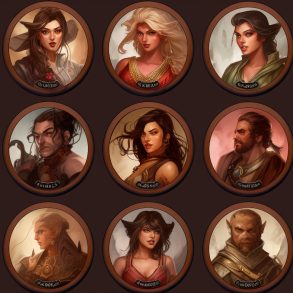Whether you’re opening an ancient doorway, avoiding danger, sealing an ancient power, or figuring out what happened to that one pet that still isn’t dead, good DnD puzzles can make a session or dungeon that much more memorable, especially when they bypass it with that one crazy idea that they just so happen to roll a nat 20 on. So today, I want to help you figure out what a good puzzle would be for your next adventure!
Now, of course, no two groups are the same, and so a puzzle that’s good for one game might not be suitable for another, and not everyone will love the same puzzle someone else does, so while this is a guide, you are highly encouraged to switch things up depending on your game table.
A curious thing, DnD puzzles
When you make a puzzle, there are a few things you want to keep in mind: It shouldn’t be too hard, it should have a reason, and it should also have weight. A puzzle that’s too hard will cause frustration and eat precious game time. A puzzle with no reason is just annoying, and a puzzle that doesn’t have weight won’t motivate anyone to solve it. It would be best if you balanced these things correctly. If you don’t, it may fall flat depending on your group.
Elements of DnD puzzle
To start, let’s figure out how difficult you want it to be. If you want the DnD puzzle to be solved quickly, you’ll want to be sure it requires no guesswork and minimal calculation to understand. If you want the puzzle to take a long time to solve, that’s when you break out red herrings, unexplained mechanics, leaps in logic, and hidden clues. However, if you think a puzzle is a little too hard, you can try some of the following:
- Skip red herrings
- Explain why certain things are happening
- Allow a check to skip certain details
- Remove a part entirely
- Let some crazy idea the party comes up with work
Now for determining the reason, it’s simple: Ask why the puzzle is there. What does it protect? Does it solve itself (a.k.a. Is the puzzle already solved by the party’s attempts to reach it or by an NPC)? Does it need to be bypassed by anyone, and if so, how easy would it be to bypass? Does it require specific skills to solve? How will this progress the story? Who built it, or if nobody, how did it get there? Has it been there the entire time? Will it do something for the game? It’s never fun when the puzzle doesn’t even need to be there and only takes up precious time. Just trust me on this one.
Types of DnD puzzles
By incorporating different types of DnD puzzles, dungeon masters can keep players engaged and make the experience more enjoyable for everyone involved. Here are some of the most popular types:
- Riddles – A classic type of puzzle that challenges players to solve a question or problem posed in a cryptic way. Riddles can be written in verse or prose, and often involve wordplay or metaphorical language.
- Cipher puzzles – These puzzles require players to decode a hidden message or symbol using a code or cipher. This type of puzzle can be made more challenging by creating a custom cipher or using a lesser-known one.
- Logic puzzles – Logic puzzles require players to use deductive reasoning and critical thinking skills to solve a problem. These puzzles can take many forms, such as logic grids, Sudoku, or other mathematical puzzles.
- Spatial puzzles – Spatial puzzles require players to navigate a physical space or manipulate objects in a specific way to solve the puzzle. These puzzles can involve mazes, moving blocks or pieces around a board, or finding a hidden object.
- Visual puzzles – These puzzles require players to use their observation skills to identify patterns or hidden elements within a picture or other visual representation.
- Music puzzles – These puzzles involve playing or interpreting a musical composition or instrument. They can range from simple melodies to complex compositions that require players to use their knowledge of music theory.
- Memory puzzles – These puzzles test a player’s memory and attention to detail by presenting them with a sequence of images or events that they must recall in order to solve the puzzle.
- Word puzzles – These puzzles involve manipulating words or letters in a specific way to create a solution. Examples include anagrams, acrostics, or crossword puzzles.
- Cryptography puzzles – These puzzles involve using codes or other encryption methods to hide information or messages. They can range from simple substitution ciphers to complex algorithms that require advanced mathematical knowledge.
- Combination puzzles – These puzzles require players to combine different elements or solve multiple puzzles to uncover the solution. An example of this type of puzzle might be using clues from a riddle to solve a cipher, and then using that information to navigate a maze or other spatial puzzle.
Adding skin in the game
Finally, the weight. Of all these things, this is the easiest to add, but probably the hardest to get right because weight and difficulty need to be balanced together. If there isn’t enough weight, it’ll just feel like a waste of time. Too much, and it’ll feel completely unnecessary and unfair. You always need something to get your players to solve the puzzle but try not to go overboard. For ideas on how to give your puzzle weight, here are a few things you can try:
- Add a reward such as money, potions, scrolls, resources, or new equipment for solving it.
- Add an element of danger such as a trap or a monster encounter. The trap or monster must be something the party can survive before the puzzle is finished.
- Put something on the line (familiar/pet/companion, ally, village, precious item, abilities, condition, etc.)
As long as you have these three components, you can make any puzzle good. Some might not seem like they follow this rule, but they do, as an example: a room with two doors (one of which is closed), a button, and a countdown. When the button is pushed, it closes the other door and starts the countdown. Pressing the button again resets the countdown. As the countdown progresses, the light in the room goes out, causing colors or other sensory effects to appear, increasing tension, and when it finishes, the doors open, and any effects end. This puzzle isn’t good on its own because it solves itself after a single button press. But, if you put it after an intense dungeon, it’s great at slowing the pace and preparing the party to solve simple puzzles later on, though you can use it as a kill zone or a way to slow invaders.
DnD puzzle ideas
In this list, we have compiled 22 unique and creative DnD puzzles that you can incorporate into your campaign. From the simple to the complex, these puzzles will test your players’ wits, creativity, and problem-solving skills, and keep them engaged in your world.
1. The Riddle of the Sphinx
A Sphinx is guarding a door and demands that the players solve its riddle before granting them passage. The riddle could be something like, “I am always hungry, I must always be fed. The finger I touch, will soon turn red. What am I?” The answer is fire.
2. The Three Switches
The players enter a room with three switches on the wall and a door on the other side of the room. Only one of the switches opens the door, but the players don’t know which one. There is a clue written on the wall that says, “One switch tells the truth, one switch always lies, and one switch sometimes tells the truth and sometimes lies. Figure out which is which to open the door.”
3. The Chessboard Puzzle
The players enter a room with a chessboard on a table. The chess pieces are set up in a specific position, and the players need to figure out the next move to win the game. The solution could be something like a knight’s move to checkmate the opponent’s king.
4. The Color Puzzle
The players enter a room with a locked door and a series of colored tiles on the wall. There is a clue that says, “Arrange the tiles in the correct order to unlock the door.” The solution could be something like a rainbow pattern, or arranging the colors in the order of the spectrum.
5. The Missing Word
The players find a book with a page missing a word. There is a clue that says, “Find the missing word to open the door.” The missing word could be something like “friendship” or “courage.”
6. The Elemental Puzzle
The players enter a room with four statues representing the elements: earth, air, fire, and water. Each statue has a puzzle that needs to be solved to activate it. Once all four statues are activated, a door opens.
7. The Music Puzzle
The players enter a room with a musical instrument and a sheet of music. The music sheet has a series of notes that need to be played on the instrument in the correct order to open the door.
8. The Language Puzzle
The players enter a room with a message written in a foreign language. They need to translate the message to figure out the puzzle solution. The translation could be something like “the key is in the tree.”
9. The Gravity Puzzle
The players enter a room with an anti-gravity field. They need to figure out how to use the field to their advantage to reach the door on the other side of the room.
10. The Cipher Puzzle
The players find a message written in code that needs to be deciphered. The code could be something like a simple substitution cipher or a more complex code that requires a keyword to decipher.
11. The Mirror Puzzle
The players enter a room with a mirror that reflects everything except the solution to the puzzle. They need to figure out how to use the mirror to reveal the solution.
12. Riddle Room
Players enter a room with a riddle inscribed on the wall. The answer to the riddle is the key to opening the door on the other side. The riddle should be challenging but not impossible to solve. The players can take turns guessing the answer, and if they are stuck, they can use clues that are hidden in the room.
13. Elemental Switches
Players enter a room with four levers, each with a different symbol that represents the four elements: earth, air, fire, and water. The players must figure out which levers to pull and in what order to unlock the door. Each time they pull a lever, it triggers a different elemental trap that they must avoid. For example, pulling the fire lever might set off flames that they must dodge.
14. Memory Match
Players enter a room with several tiles on the floor, each with a different symbol or color. They must step on each tile in a specific order to unlock the door. The order is hidden in a sequence of pictures or symbols on the wall that the players must memorize. If they step on the wrong tile, it triggers a trap that hinders their progress.
15. Mirror Mirror
Players enter a room with a large mirror on one wall. The mirror creates an illusion of another room on the other side, with a door that leads to the next room. However, the door is just a reflection, and the players must figure out how to get through the mirror to reach the real door. This puzzle can involve using mirrors and light sources to reflect the image of the door onto the real world.
16. Chessboard
Players enter a room with a chessboard on the floor. Each square on the chessboard is rigged with a trap that is triggered when a player steps on it. The players must navigate the board without triggering any traps to reach the other side. To make it more challenging, the chess pieces on the board may represent certain obstacles or enemies that the players must avoid.
17. Cryptogram
Players enter a room with a message written in code on the wall. They must decipher the message to unlock the door. The code can be a simple substitution cipher or something more complex like a Vigenère cipher. Clues to solving the code may be hidden in the room or in other parts of the dungeon.
18. Magic Portal
Players enter a room with a magic portal on one wall. They must figure out the right combination of spells or magic items to activate the portal and transport them to the next room. The spells or items needed may be hidden in the room or require the players to backtrack to find them.
19. Symbol Maze
Players enter a room with a maze on the floor. The maze is filled with symbols and icons that represent different traps or obstacles. The players must find the correct path through the maze to reach the other side. Each wrong turn triggers a different trap that hinders their progress.
20. Cipher Lock
Players enter a room with a locked chest or door that requires a code to open. The code is a simple substitution cipher that the players must decipher by finding clues in the room. Once they have the code, they can unlock the chest or door and continue on.
21. Light Puzzle
Players enter a dark room with a series of torches on the walls. They must light the torches in a specific pattern or order to unlock the door. The pattern may be hidden in the room or require the players to backtrack to find clues.
22. Pressure Plates
Players enter a room with several pressure plates on the floor. Each plate triggers a different trap or obstacle when stepped on. The players must figure out which plates to step on and in what order to unlock the door. They may need to use items or spells






